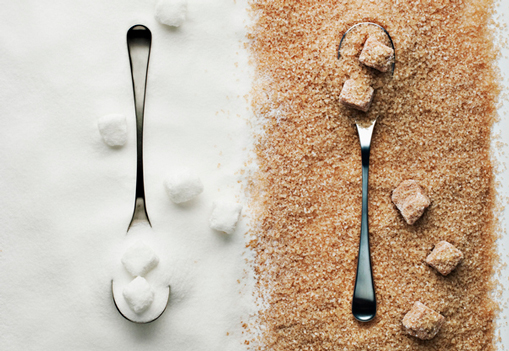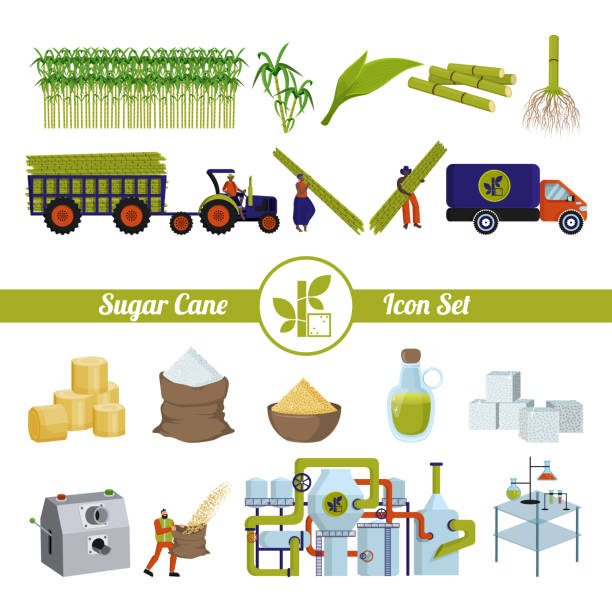Eco-Conscious sugar cane products That Encourage Environmentally Friendly Living
Revealing the Manufacturing Keys Behind Sugar Cane and Its Diverse Variety Of Products
The manufacturing trip of sugar cane is elaborate and multi-faceted. It starts in the fields, where mindful harvesting methods established the stage for ideal sugar removal. The procedure includes numerous stages, consisting of juice extraction and refining - sugar cane products. Sugar cane's possible extends far past mere sweet taste. Innovations in handling and lasting practices are reshaping its duty in modern industries. What lies in advance for this functional plant? The answers may stun those interested in its future
The Trip of Sugar Cane: From Area to Manufacturing facility

As sugar cane guides gently in the tropical breeze, it begins a transformative journey from field to factory. The lively environment-friendly stalks, rich in sucrose, are cultivated under suitable problems, taking advantage of enough sunshine and rainfall. Farmers very carefully monitor the growth, making certain the plants reach their peak maturation, which is important for making best use of sugar content.Once matured, the cane is prepared for harvesting, where its fibrous structure holds the assurance of wonderful items. The journey proceeds as the stalks are carried to processing facilities, where they undertake a collection of careful steps. At the factory, the cane is washed, shredded, and pushed to remove the juice. This juice is after that clarified and vaporized, paving the way for condensation. Each phase of this trip is crucial, as it inevitably figures out the quality of the sugar and various other products stemmed from this flexible plant.
Collecting Methods: The Initial Step in Production
Harvesting sugar cane requires precision and ability, as the timing and method directly influence the top quality of the end product. The procedure normally begins with determining the ideal harvest, which is vital; sugar material peaks right before the plant reaches complete maturity. Farmers commonly rely upon experience and farming indicators to decide when to harvest.Two primary techniques control the harvesting landscape: handbook and mechanical methods. Hands-on harvesting, though labor-intensive, enables mindful selection of stalks and decreases damage. Employees use machetes to reduce the cane near the base, making sure the stalks remain undamaged for processing.Mechanical harvesting, on the other hand, uses specific devices to cut and gather the cane quickly. While this technique greatly boosts performance, it may result in greater degrees of debris and lower sugar content. Eventually, the picked technique affects not only the amount yet also the high quality of sugar cane delivered to processing facilities.
The Removal Refine: Opening the Sweet taste
The removal process is crucial for changing harvested sugar cane into wonderful juice. Numerous approaches of juice extraction can significantly affect the quality and yield of the final product. Recognizing these strategies is necessary for optimizing the advantages of sugar cane manufacturing.
Gathering Strategies Explained
Launching the sweet taste of sugar cane starts with precise harvesting techniques that guarantee maximum yield and quality. The procedure typically involves cutting the cane at ground degree, making sure very little damage to the plant and enabling regrowth. Harvesters often use machetes or specialized devices, depending on the range of the operation. Timing is essential; gathering takes place when the sugar content reaches its top, normally during dry periods. Furthermore, workers need to be educated to determine the most effective stalks, preventing those that are as well old or infected. Effective transportation to processing centers is likewise essential, as hold-ups can bring about sugar degradation (sugar cane products). These meticulous strategies inevitably lay the structure for creating high-quality sugar and its varied spin-offs
Juice Extraction Methods
Juice extraction is an essential action in transforming sugar cane into its pleasant essence. This process typically entails several methods, each made to effectively extract the sweet liquid from the coarse stalks. One of the most common strategy is milling, where the sugar cane is crushed in between heavy rollers to launch the juice. Another approach is diffusion, which employs warm water to dissolve the sugar from the cane fibers, making it a much more efficient choice for large-scale operations. In addition, some producers make use of screw presses, which apply mechanical stress to extract juice. After removal, the juice undergoes explanation to eliminate pollutants before additional processing. Each technique mirrors the market's emphasis on making the most of return and guaranteeing high-quality sugar manufacturing.
Refining Sugar: Transforming Raw Cane Into Granulated Gold
The visit here refining process is vital for transforming raw cane sugar into the pure, granulated product customers recognize. sugar cane products. This includes a collection of extraction and filtering steps to eliminate impurities, adhered to by formation and drying methods that boost the sugar's quality. Understanding these approaches discloses the elaborate improvement from cane to the gold granules that sweeten countless foods and beverages
Extraction and Filtering Refine
A crucial phase in the sugar manufacturing journey includes the removal and purification of juice from freshly harvested sugar cane. This process begins with crushing the cane to launch its wonderful juice, commonly using huge rollers or mills. The removed juice contains not just sugar however likewise contaminations, including fibers and mud. To guarantee the juice appropriates for further refining, it undertakes a filtration procedure. This includes passing the juice with numerous filters and clarifiers to remove solid particles and undesirable products. Chemicals such as lime may be included to assist in the clarification process. The result is a clear, raw cane juice that works as the structure for producing polished sugar, all set for subsequent stages of processing.

Condensation and Drying Techniques
After the extraction and filtering procedures yield clear raw cane juice, the following action in sugar manufacturing is crystallization. This procedure includes steaming the juice to evaporate water, enabling sugar particles to develop crystals. As the fluid thickens, it gets to supersaturation, motivating sugar to crystallize. The combination is then cooled, advertising further crystal development. As soon as condensation is full, the sugar crystals are separated from the staying syrup via centrifugation.The final phase involves drying, where the crystals are revealed to warm air to get rid of recurring moisture. This step is important, as it ensures website here the item achieves the preferred granulation and rack stability. The result is pure, granulated sugar, all set for product packaging and distribution.
Beyond Sweet Taste: Diverse Products From Sugar Cane
While sugar cane is primarily acknowledged for its wonderful taste, its versatility expands far beyond simple sweet taste. This resistant plant works as the source for a myriad of products that accommodate varied industries. Ethanol, originated from sugar cane fermentation, plays an important duty in renewable resource, functioning as a cleaner choice to nonrenewable fuel sources. Furthermore, molasses, a result of sugar refining, is used in pet feed, as well as in cooking and fermentation processes.Sugar cane's fibrous deposit, referred to as bagasse, is not squandered; it is changed right into biodegradable packaging materials and functions as a biomass gas source. Numerous sugars and syrups gotten from sugar cane discover applications in the food and beverage market, adding to flavor and conservation. The plant's fallen leaves can be made use of for thatching, while its juice is eaten as a renewing drink in lots of cultures. Sugar cane exemplifies agricultural capacity beyond its sugary reputation.
Technologies in Sugar Cane Processing
As advancements in technology remain to improve different industries, sugar cane processing is experiencing a considerable improvement. Modern advancements, including automated harvesting and precision farming, are enhancing effectiveness and return. Drones and sensors keep track of plant health, allowing farmers to optimize irrigation and nutrient application, ultimately improving productivity.In handling centers, state-of-the-art equipment and tools streamline procedures. Developments such as enzymatic processing and progressed purification methods improve the extraction of sugar while minimizing waste. Furthermore, the adoption of real-time information analytics enables manufacturers to monitor processes closely, making sure quality control and lowering downtime.Biotechnology is also playing an essential function; hereditary modifications improve sugar cane's resistance to parasites and ecological stressors. These innovations not only contribute to higher sugar yields however likewise assist in the manufacturing of varied byproducts from the cane, broadening its industrial applications. Generally, these advancements are paving the method for an extra reliable and lasting sugar cane handling sector.
The Future of Sugar Cane: Sustainability and Bioproducts
The future of sugar cane production is significantly linked with sustainability and the growth of bioproducts. As international need for eco-friendly alternatives rises, the sugar cane sector is rotating in the direction of methods that lessen environmental impact. Advancements in growing strategies, such as accuracy agriculture and integrated bug administration, aim to improve yield while lowering source consumption.Furthermore, sugar cane is being discovered as a raw material for biofuels, bioplastics, and various other lasting items. These bioproducts not just use an eco-friendly choice to traditional nonrenewable fuel sources and plastics but also add to a round economic situation by making use of waste materials.Research and growth in biotechnology are leading the method for improved sugar cane ranges that require less water and fertilizers, better advertising sustainability. By accepting these improvements, the sugar cane market can secure its future while addressing critical ecological obstacles, demonstrating its possible as a cornerstone of sustainable growth.
Regularly Asked Concerns
What Are the Ecological Effects of Sugar Cane Farming?
The environmental influences of sugar cane farming include deforestation, dirt deterioration, and water pollution. In addition, the usage of pesticides can hurt biodiversity, while monoculture practices minimize ecosystem durability, posing long-lasting sustainability obstacles for agricultural practices.

Exactly How Does Sugar Cane Compare to Various Other Sweeteners Nutritionally?
Sugar cane, rich in carbs, offers energy but lacks crucial nutrients contrasted to options like honey or syrup, which supply minerals and vitamins. Its high glycemic index also increases worries over blood sugar spikes.
What Are the Health And Wellness Advantages of Consuming Sugar Cane Products?
The health and wellness benefits of consuming sugar cane items include enhanced food digestion, boosted energy degrees, and potential antioxidant residential or commercial properties. Additionally, they might support hydration and supply necessary minerals and vitamins, adding favorably to total wellness.
Just How Is Sugar Cane Waste Utilized After Processing?
After processing, sugar cane waste is utilized in different ways, including biofuel production, animal feed, and organic fertilizers. This sustainable technique minimizes ecological influence while making best use of source effectiveness YOURURL.com within the sugar market.
What Are the Historic Origins of Sugar Cane Growing?
